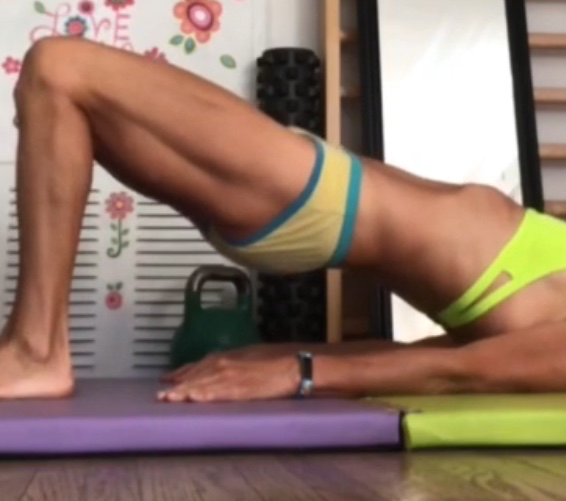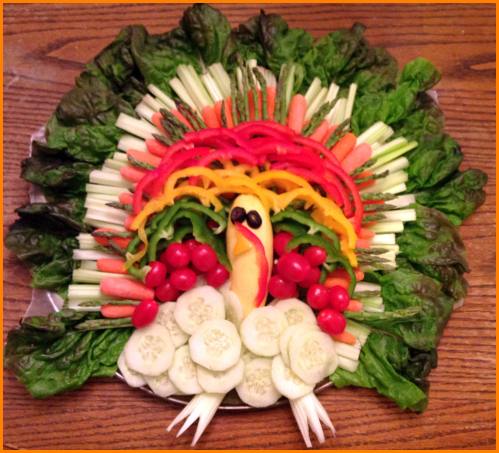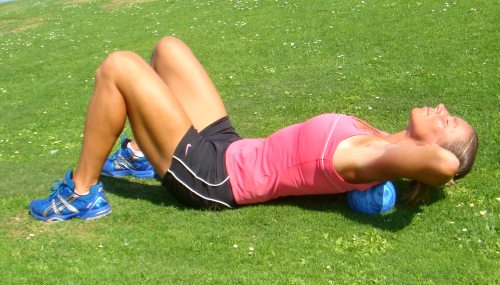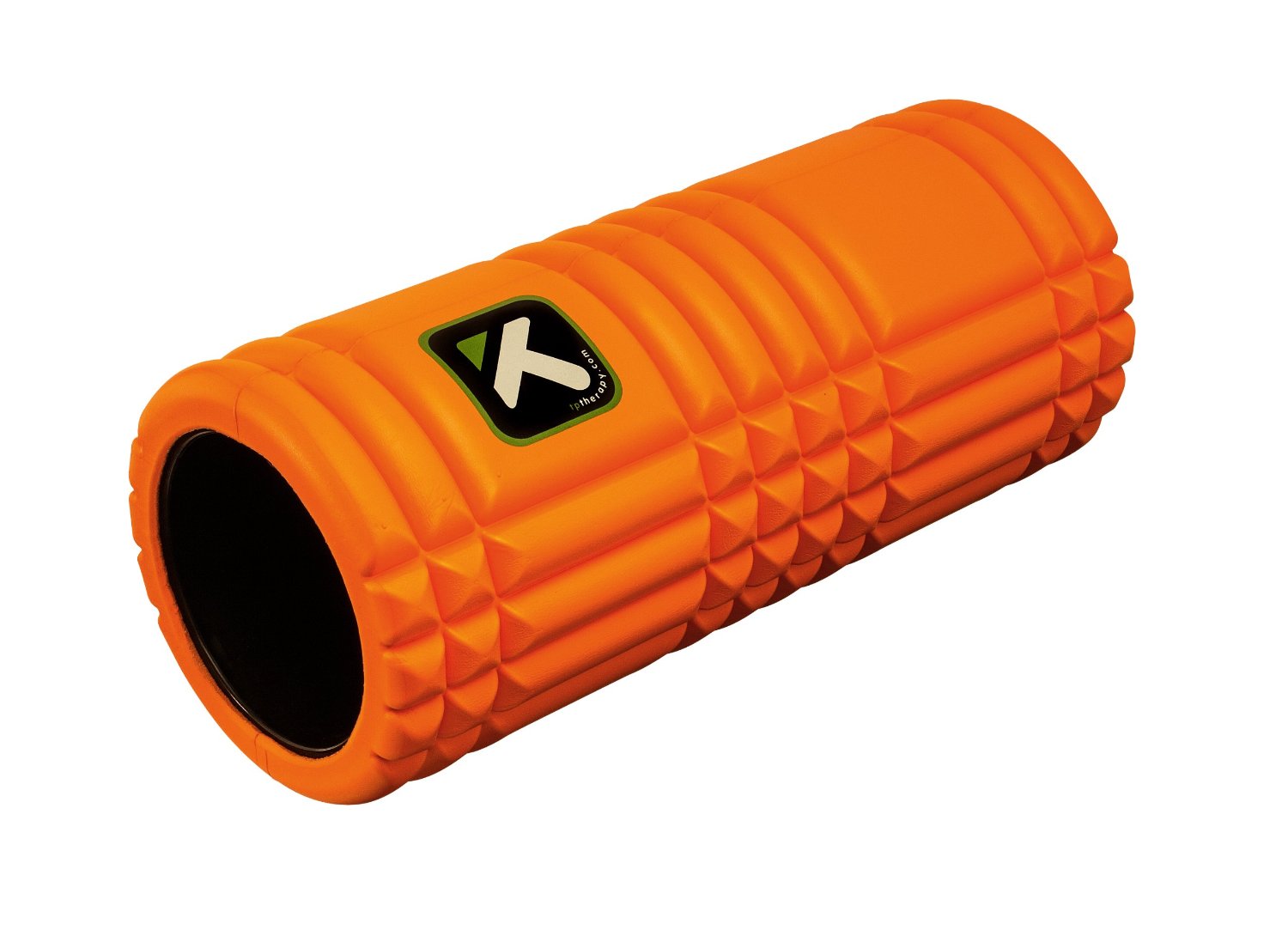The glute bridge and its advanced version can possibly be the best exercise that you need in your regimen on a regular basis.
Usually, the majority of people have very underdeveloped glutes and hamstrings. This happens because of too much sitting and not training the muscles of the posterior chain. This is detrimental in athletes because the glutes and hamstrings are essential in all locomotion and athletic movements. Sprinting, jumping, rapidly changing directions (all this is what tennis is about), skating, and other ball sports are an example of the importance of a strong posterior chain.
There is one simple exercise that you can do anywhere, without any equipment, and which is so underused that it is hard to believe. It is called the glute bridge, or the hip extension bridge. During the movement, the hip joint extends through the action of the glutes, hamstrings, and extensors in the lower back.
It should be your highest priority to keep the muscles of your posterior chain active and strong to avoid any future injuries and lower back pain. Lower back pain is one of the major complains for sedentary people and imbalanced athletes. By keeping your posterior chain strong and active, you will also improve your posture. You also get a tremendously shaped butt.
Simple Glute Bridge
- Lie on the ground on your back and bend your knees at 90 degrees.
- Lift your hips off the floor by pushing your heels to the ground.
- Lift your hips high, so they are in one line with your knees and the shoulders.
- On the top, focus on adding a posterior pelvic tilt to your hips—think about “the tail between the legs”, or pulling your ribs in (the distance
- between your pubic bone and your ribs should shorten). This is going to be MUCH harder.
- Now lower the hips, and lift them up again. Repeat 20 times.
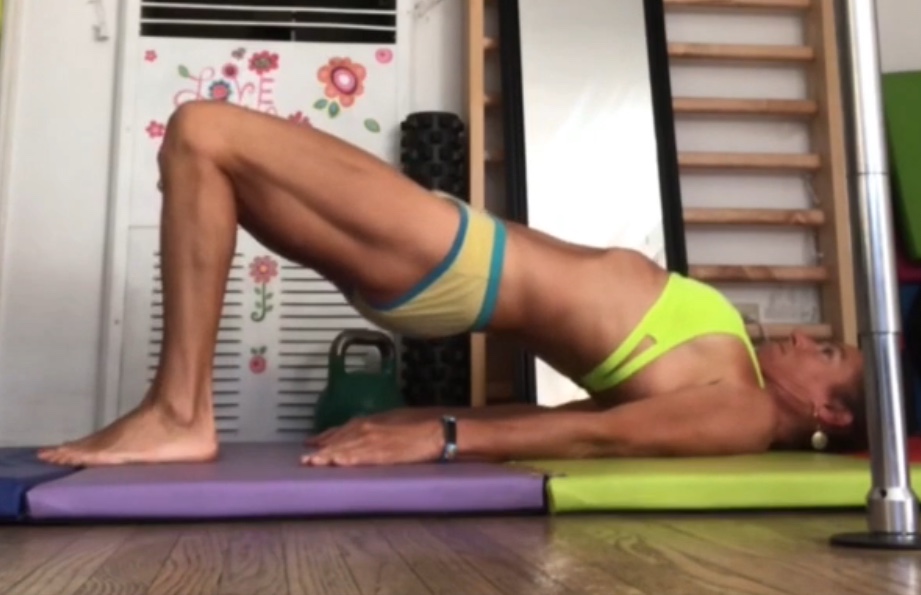
Glute Bridge Walk
This is a harder version of the glute bridge as you will have to support all the weight on one leg (glute) only.
- Get into the glute bridge and slowly extend one leg forward (keep the knees at the same level). Don’t let the hip(s) sink, and don’t let them twist.
- Hold for 1–2 seconds, and switch with control. Repeat 20–30 times.
- If the hips sink a little bit when extending the leg, lift them high up when you are switching the legs. Eventually, your glutes get strong enough to control the movement fully even on one leg.
- To increase difficulty, put your arms across your chest.
Single Leg Glute Bridge
This is a slightly different version of the Glute Bridge Walk.
- You perform all the repetitions on one side first, before changing.
- Get in a glute bridge position, extend one leg forward, and sink the hip and lift the hip 15–20 times, then switch sides.
- The hips and core need to work hard to stabilize the torso during the movement, and that’s why you may find this variation quite hard.
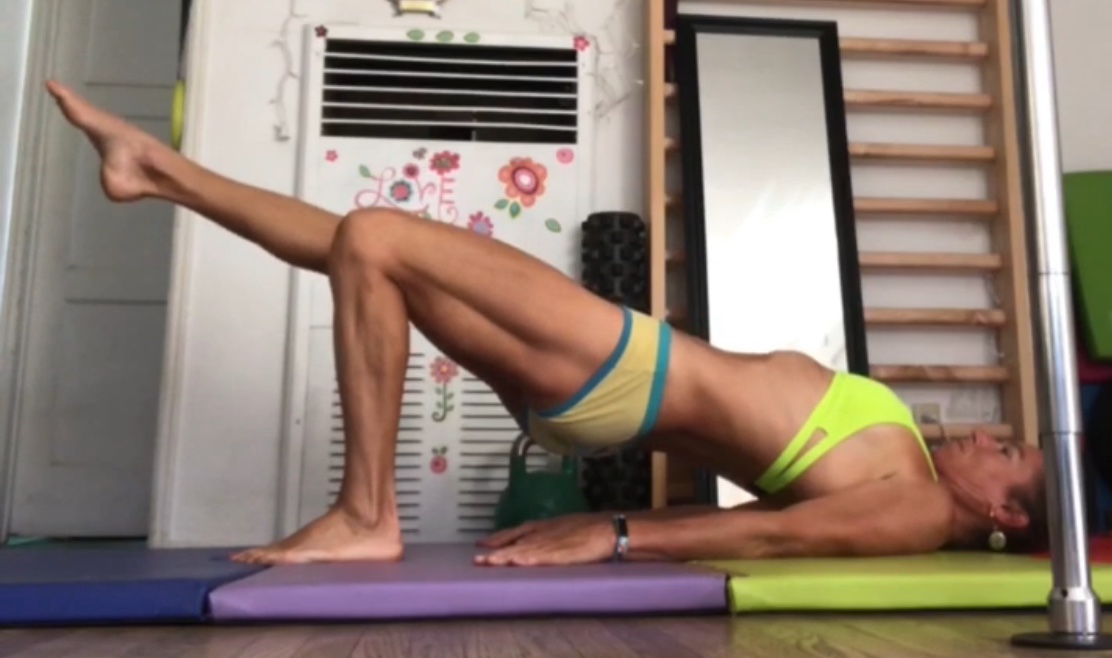
Advanced Glute Bridge aka Twisting Single Leg Glute Bridge
All the above bridges worked your glutes in one plane (sagittal), but it is also important to strengthen the glutes in other planes because that’s what happens when you perform your sports. This exercise will apply a little force in a different direction and thus train the gluteus medius to stabilize the load.
You may find this exercise surprisingly difficult when the lever arm moves away from the body.
- Lie down and get into a single leg glute bridge.
- Lift one leg up, so the foot is at the same level as the grounded leg’s knee.
- Slowly rotate that lifted leg out, as much as your body (hip external rotation) lets you, and then slowly rotate it back in.
- Do your repetitions slowly and controlled, maintaining a strong contraction of the grounded leg.
- The grounded leg’s gluteus medius will need to work really hard to maintain the hips leveled (parallel with the ground).
- Do not let the hips twist or sink. They most probably will if you have never done this exercise. It is a sign that you need to do some work here until you can fully control your hips.
- The side benefit of this exercise is that you will improve the active mobility of your hips, which will serve you well, especially if you are a little bit on a tight side.
Getting your gluteus medius strong will improve your performance in tennis, running, squats, lunges, and other sports. It will help to even out any imbalances that could over time create overuse injuries. The strong gluteus medius is vital for healthy movement, athleticism, excellent posture, and pain-free back.
Add these exercises into your regimen generously, and you will be surprised how quickly you will feel great, not just in your athletic performance, but in your daily activities as well.
.

